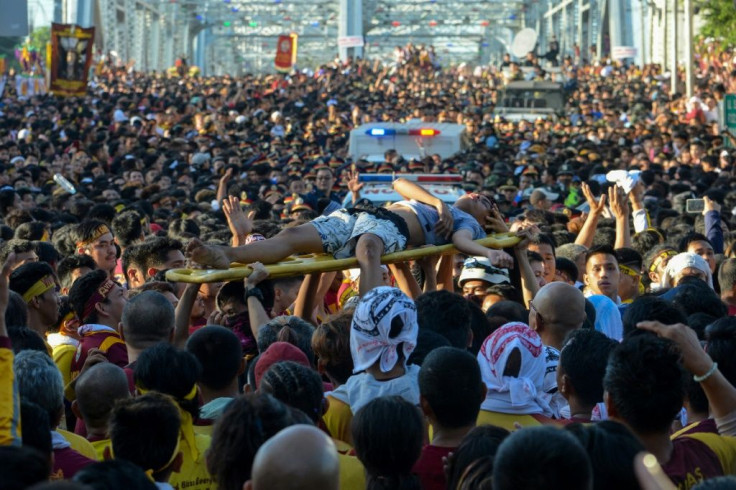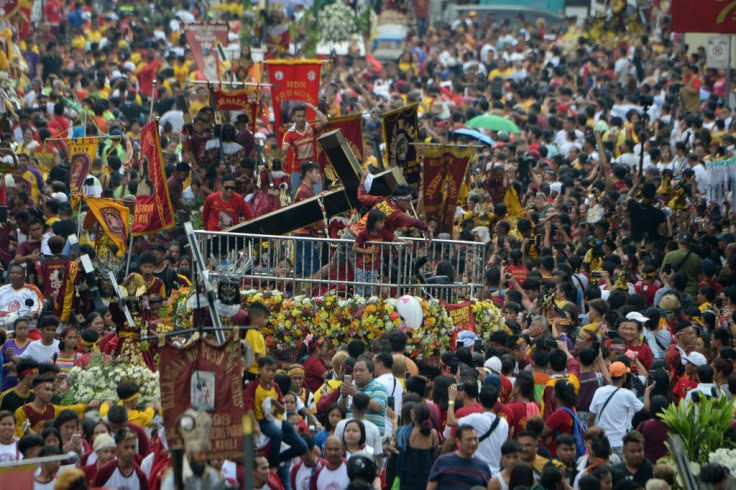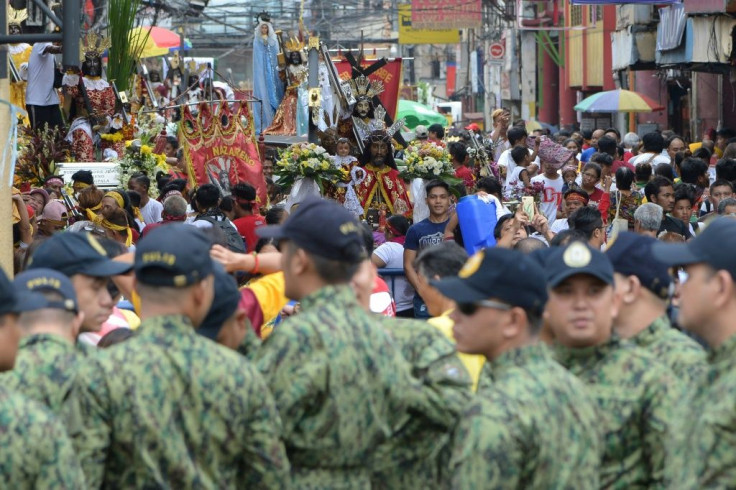Philippine Catholics Swarm Christ Icon Hoping For Miracle

Swarms of barefoot believers thronged a revered icon of Jesus Christ on Thursday in Manila for a lumbering and raucous procession considered one of the world's largest shows of Catholic fervour.
As the tropical sun beat down on the capital, hundreds of thousands of faithful were packed along the route for the procession of the so-called Black Nazarene, which they believe grants miracles.
Devotees clad in maroon and yellow risked injury clambering over one another to touch the life-size statue, wipe a white towel on it or lay a hand on the fat ropes used to pull its metal float.

"We believe that if you pull the carriage, the Lord will cure all your diseases," 50-year-old vendor Boyet Lara told AFP. "Nothing is impossible if we believe."
Local officials' estimate put the number of participants at roughly two million, though AFP could not verify that figure.

The crush of humanity causes scores of injuries every year, and as the procession neared its final stretch authorities reported some 200 among the barefoot faithful had suffered sprains, scrapes or heat exhaustion.

"In 2016, the rope pulling the statue wrapped around my head and I nearly choked to death. But I managed to survive," said devotee Crisostomo Belarmino, 52.
"I cried that time and said 'Thank you Nazarene for giving me another life,'" he added.

There were no immediate reports of deaths, which have periodically plagued the event in prior years, often due to heat or pre-existing health problems.
The statue is named for its charred appearance and is accompanied by many difficult to prove stories, including that it survived a fire while en route to the Philippines in the 17th century.
Critics call the procession a mish-mash of superstition and unnecessary risk for the people who leave home barefoot and cram into the procession route each year.
However, officials in the Philippines' powerful Catholic Church called it a demonstration of participants' "overflowing faith, an expression of their devotion".
Many devotees swear the Black Nazarene has brought them help when they needed it most.
"When my husband suffered a stroke two years ago, even if I didn't ask for financial help, I got it," vendor Angeline Mara, 43, said.
"Every time I hear the song for the Nazarene, I feel like I'm about to cry," she added.
The Philippines is plagued by violent insurgencies, including Islamic State-linked militants that have carried out bombings on civilian targets.
© Copyright AFP 2024. All rights reserved.





















